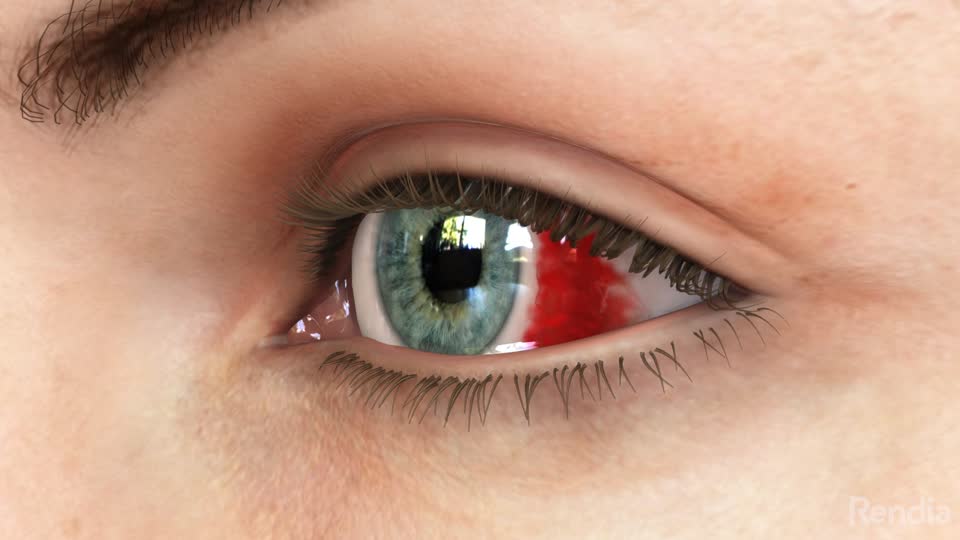A new health concern has emerged in Rwanda, where the Marburg virus, often called the “Bleeding Eye Disease,” has caused an outbreak, leading to 66 confirmed cases and 15 deaths. While the virus is rare and primarily confined to Africa, its severity has drawn international attention. By understanding the disease and how it spreads, we can better prepare ourselves and support ongoing efforts to control its impact.
What is Marburg Virus?
The Marburg virus is a highly infectious pathogen belonging to the same family as the Ebola virus. It causes Marburg Virus Disease (MVD), a severe hemorrhagic fever that damages the body’s vascular system, leading to symptoms like fever, vomiting, and, in severe cases, bleeding.

Urgent Marburg warning issued over the spread of deadly ‘bleeding eye” disease.
First identified in 1967, the virus typically spreads through contact with infected fruit bats and non-human primates. Although outbreaks are rare, their impact can be devastating due to the high fatality rate, ranging from 23% to 90%.
Symptoms to Watch For
Marburg virus symptoms usually appear 2 to 21 days after exposure.

Representative image of bleeding eye. Image source: canva
Here are the key warning signs:
- Early Symptoms:
- Sudden high fever
- Severe headache
- Intense muscle aches (myalgia)
- Chills
- Progressive Symptoms:
- Nausea and vomiting
- Watery diarrhea
- Abdominal pain
- Advanced Stage:
- Bleeding from eyes, ears, nose, and gastrointestinal tract
- Shock and organ failure in severe cases
Early detection and supportive care can significantly improve survival rates.
How It Spreads
The Marburg virus can be transmitted through:
- Contact with Infected Animals: Especially fruit bats and non-human primates.
- Person-to-Person: Through bodily fluids like blood, saliva, vomit, or sweat of infected individuals.
- Contaminated Surfaces: Items or surfaces that have come into contact with the virus.
Preventive Measures:
- Wash your hands frequently with soap and water.
- Avoid contact with bats, primates, or suspected infected individuals.
- Avoid contact with blood and body fluids of people who are sick.
- Use gloves and protective equipment if caring for someone who may be infected.
The Current Situation in Rwanda
Rwanda reported its first Marburg virus outbreak in 2024, affecting over 60 individuals, including healthcare workers. Despite its severity, the outbreak appears to be under control, with no new cases reported since late October.
Efforts by organizations like the World Health Organization (WHO) and Centers for Disease Control and Prevention (CDC) include:
- Investigational vaccine trials for healthcare workers.
- Public education campaigns to prevent further spread.
If no new cases are detected, the outbreak could be officially declared over by December 2024.

What Can You Do?
As a global community, we can reduce the risk of such outbreaks:
- Stay Informed: Learn about the symptoms and prevention strategies.
- Practice Good Hygiene: Regular handwashing and disinfecting surfaces.
- Support Healthcare Efforts: Advocate for and support funding for vaccine research and outbreak management.
While the risk of Marburg virus spreading outside Africa is low, vigilance is crucial to prevent potential outbreaks in other regions.
Let’s work together to spread awareness about Marburg virus disease. Share this article with your friends, family, and community to help support education and prevention efforts. The more people know about the disease, the better we can fight it together.
FAQs about Bleeding Eye Disease
Q: Can Marburg virus spread through the air?
A: No, Marburg virus does not spread through the air. It spreads through direct contact with infected bodily fluids or contaminated surfaces.
Q: Is there a cure for Marburg virus disease?
A: Currently, there is no specific antiviral treatment or cure for Marburg virus disease. Supportive care, such as hydration and symptom management, improves outcomes.
Q: How does Marburg virus compare to Ebola?
A: Both viruses belong to the same family and cause severe hemorrhagic fevers with similar symptoms and transmission modes. However, they are caused by different viruses and may vary slightly in fatality rates and outbreak patterns.
Q: What are the chances of surviving Marburg virus disease?
A: Survival depends on early detection and quality of care. The mortality rate ranges from 23% to 90%, with supportive care improving chances significantly.
Q: Are there vaccines for Marburg virus?
A: There are no approved vaccines yet, but investigational vaccines like rVSVΔG-Marburg and MVA-MARV are in clinical trials.
Q: Should I be worried if I live outside Africa?
A: The risk of Marburg virus spreading to other continents is currently low. However, staying informed and practicing good hygiene are always advisable.
Q: How can healthcare workers protect themselves?
A: By wearing personal protective equipment (PPE), following strict infection control protocols, and participating in vaccination trials if available.
Resources:
- https://www.cdc.gov/ncezid/index.html
- https://rbc.gov.rw/marburg/
- https://www.cdc.gov/marburg/about/index.html
- https://www.ndtv.com/world-news/what-is-bleeding-eye-virus-that-has-killed-15-in-rwanda-so-far-7157802

